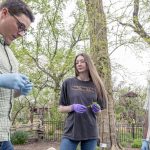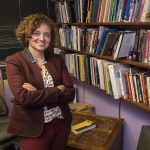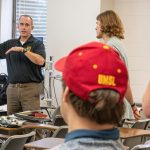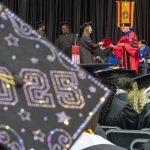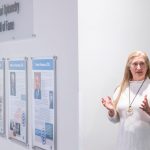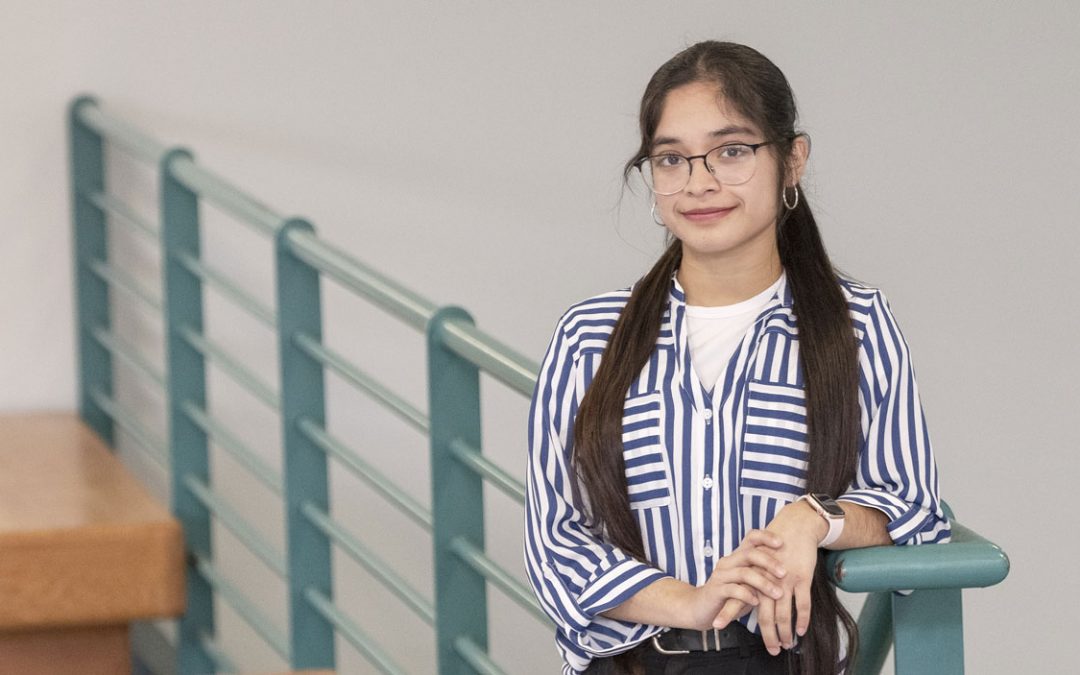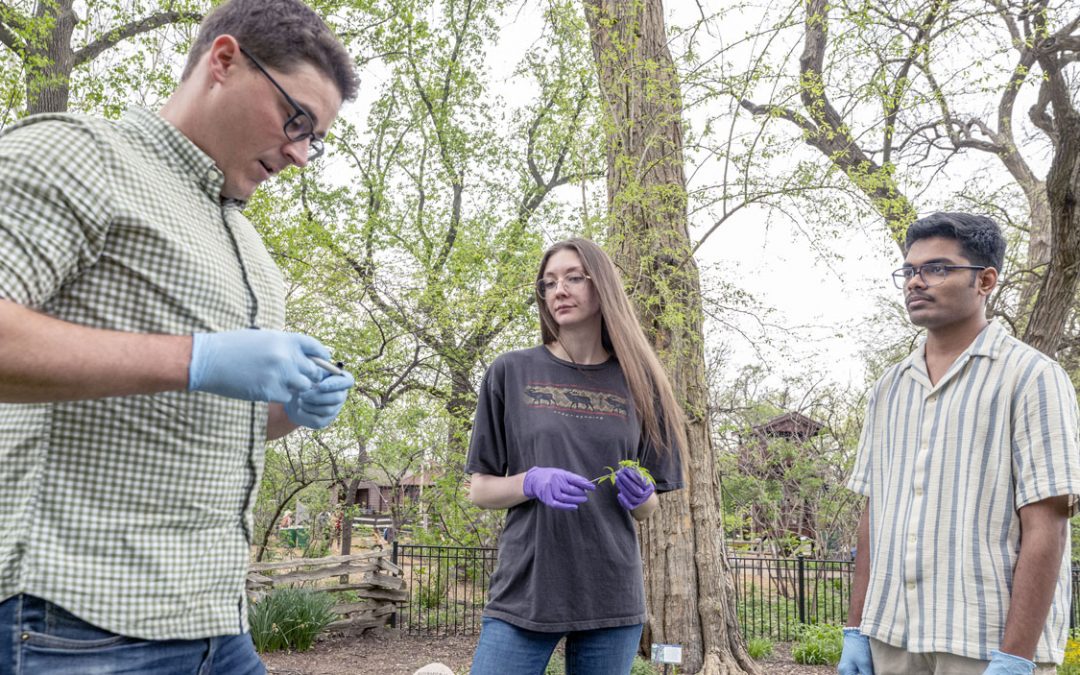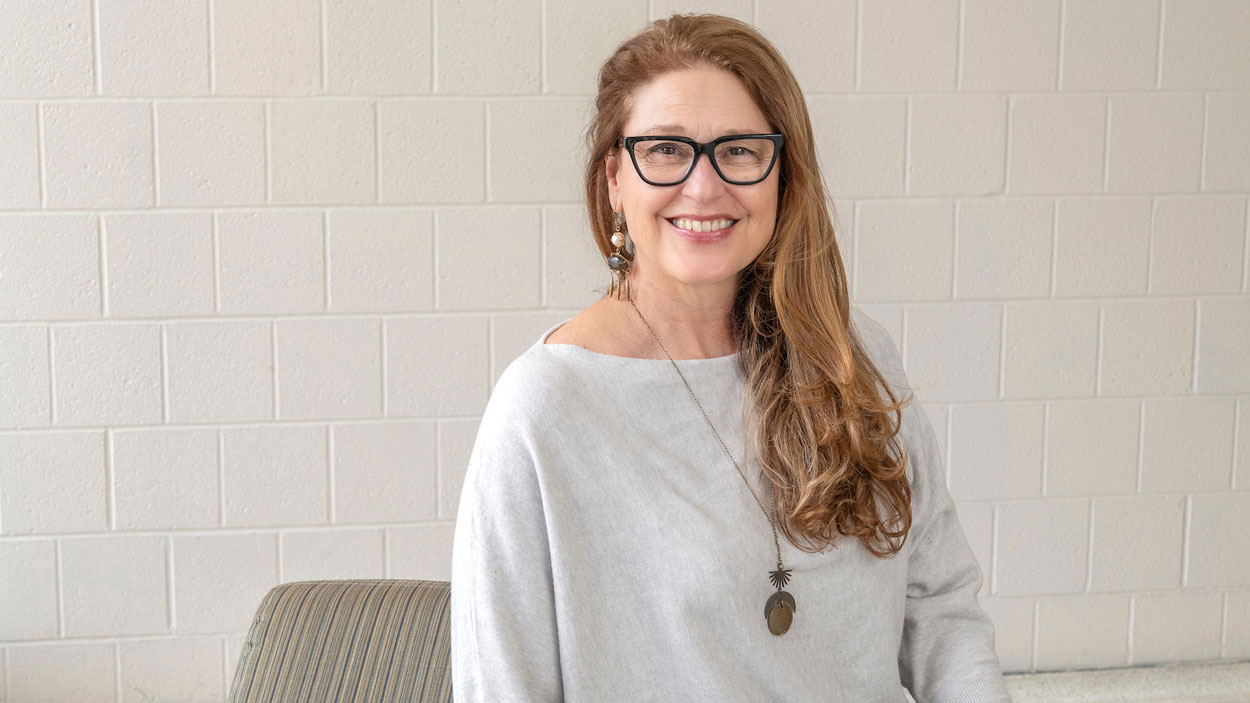
Amy D’Agrosa and Teaching Professor Martha Caeiro launched a three-week study abroad trip to northwest Spain, where UMSL students had the opportunity to experience the Camino de Santiago. (Photo by Derik Holtmann)
Growing up in Spain, Amy D’Agrosa became captivated by the Camino de Santiago – a centuries-old network of pilgrimage footpaths in the northwest region. For hundreds of years, pilgrims have walked days on end, finding meaning along the way, to reach a holy site in Santiago de Compostela, Spain. Last summer, D’Agrosa and Teaching Professor Martha Caeiro launched a three-week study abroad program at the University of Missouri–St. Louis that integrates a Camino experience with language education at the University of Santiago de Compostela. UMSL students studied in the city for two weeks and then walked the path in the Spanish countryside for six days, traveling 12 to 16 miles a day.
1. What’s the significance of the Camino and why has it continued to intrigue people all these years?
The Camino is an ancient pilgrimage that dates back to the ninth century. One of the beautiful things about this is that it has captured the attention and the hearts of people over the centuries because, legend has it, the remains of St. James, an apostle, are buried where there is now the cathedral of Santiago de Compostela. The remains were reportedly discovered by King Alfonso II of Asturias, and it was because of him that pilgrims started to go to visit them.
2. You and your students walked for six days. What is it like to go through that physical hardship and journey with others?
Every day was different for each one of us. Some days presented more challenges than others, depending on the difficulty of the terrain and the rain. For some, arriving at a warm dry inn at the end of a long day was welcome, while others were focused on being present, walking one step at a time, observing the natural beauty, the people they encountered and the physical demands. But despite any hardship, every day, everyone on the Camino shares a traditional greeting, wishing each other a ¡Buen Camino!, or “good journey.”
3. In a very technologically connected world, how important is silence and self-reflection to the experience?
For me, it’s essential. I believe that disconnecting from technology is one of the most profound ways to witness our experience, both internally and externally with our world. It’s just a way to be present to what’s happening in an unfolding moment.
This story was originally published in the spring 2025 issue of UMSL Magazine. If you have a story idea for UMSL Magazine, email magazine@umsl.edu.





